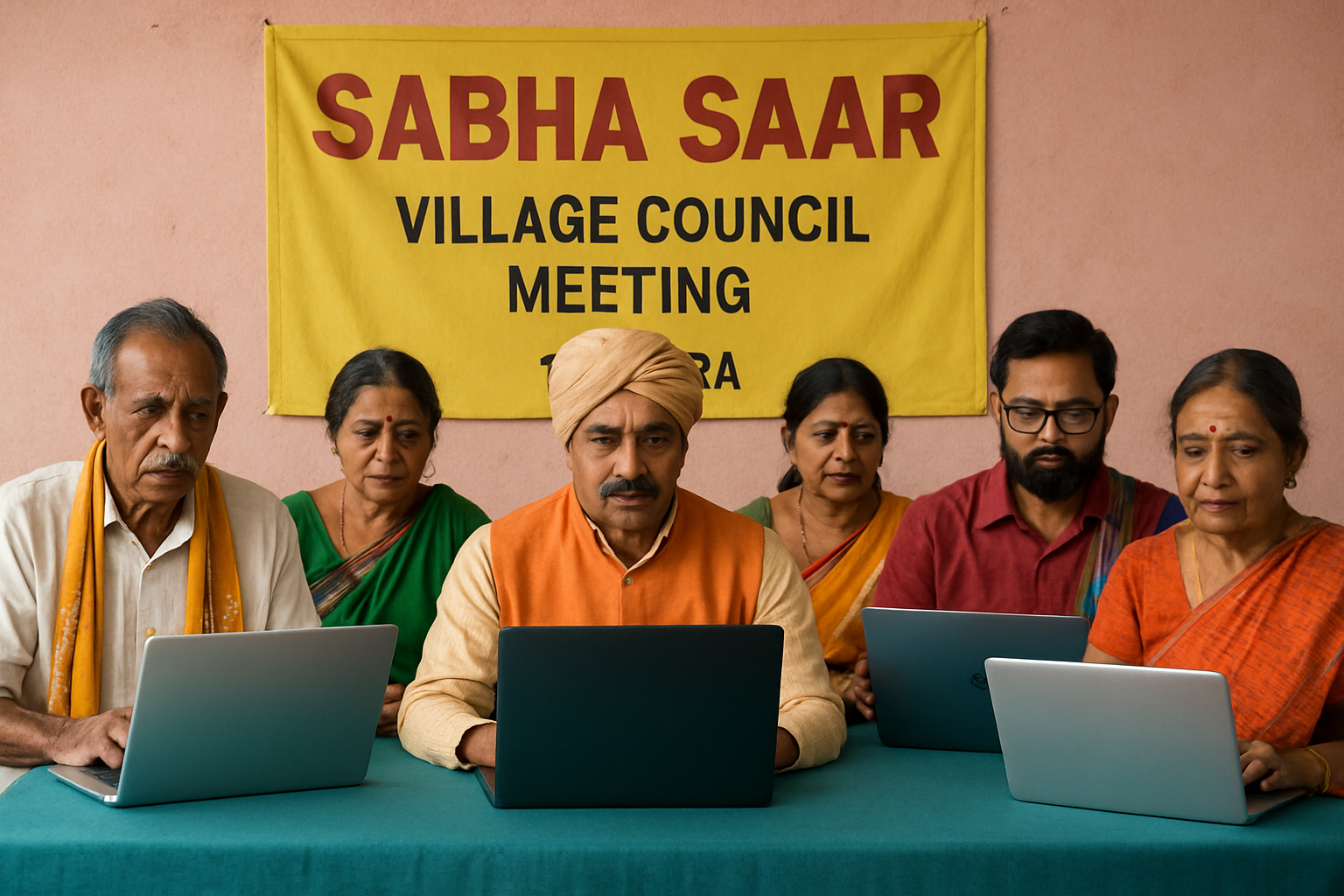Quick Take
- Government launches Sabha Saar on August 15 to automate meeting documentation for 2.55 lakh village panchayats
- Tripura’s 1,194 gram panchayats will pilot the AI-powered transcription tool first
- Tool supports 13 Indian languages and processes over 10,000 gram Sabha meetings annually
- Built on Bhashini platform to eliminate manual documentation inefficiencies
Union Minister Rajiv Ranjan Singh Lalan will unveil the AI-powered documentation tool on Independence Day, targeting 2.55 lakh village panchayats nationwide to streamline rural governance.
The Indian government is reshaping how village councils operate with Sabha Saar, an AI-powered tool that automatically converts meeting audio recordings into structured minutes. Union Minister Rajiv Ranjan Singh Lalan launches the platform on August 15, representing a major change in how India’s rural administrative bodies document their proceedings.
Tripura serves as the testing ground for this digital initiative. All 1,194 gram panchayats in the state will adopt Sabha Saar before the nationwide rollout begins. The tool tackles persistent documentation challenges that have historically delayed development projects and impacted transparency in rural governance.
Technology Architecture and Language Support
Built on the government’s Bhashini platform, Sabha Saar uses AI and Natural Language Processing technologies to transcribe discussions, identify key decisions, and produce formatted minutes. The tool supports 13 Indian languages, enabling broader adoption across diverse regions.
Officials can upload meeting recordings through existing e-GramSwaraj credentials, eliminating hours of manual documentation work. A government official told The Indian Express that the tool “will bring uniformity in minutes across the country, potentially eliminating inconsistencies that have historically plagued rural documentation.”
Addressing Rural Administration Bottlenecks
The current documentation burden significantly impacts rural administration efficiency. With over 10,000 gram Sabha meetings conducted through the Panchayat NIRNAY platform in 2024-25, the manual documentation process diverts officials from core service delivery responsibilities.
Sabha Saar’s integration with existing government systems minimizes training requirements while establishing consistent documentation standards. This alignment supports broader digital governance objectives and enhances transparency across rural administrative processes.
Strategic Implications for Governance Technology
The launch shows growing government confidence in language technology solutions, demonstrating how national platforms can address sector-specific operational challenges. Language localization emerges as a critical success factor, evidenced by Sabha Saar’s multi-language support designed for India’s linguistic diversity.
Tripura’s pilot implementation will provide essential insights before national deployment, offering a controlled environment to refine the system’s performance across different administrative contexts. Successful rural documentation solutions could inspire similar applications in urban municipal bodies and state assemblies.
For technology companies, this initiative confirms significant opportunities for governance-focused solutions in rural India, particularly those leveraging existing infrastructure to solve operational inefficiencies.






